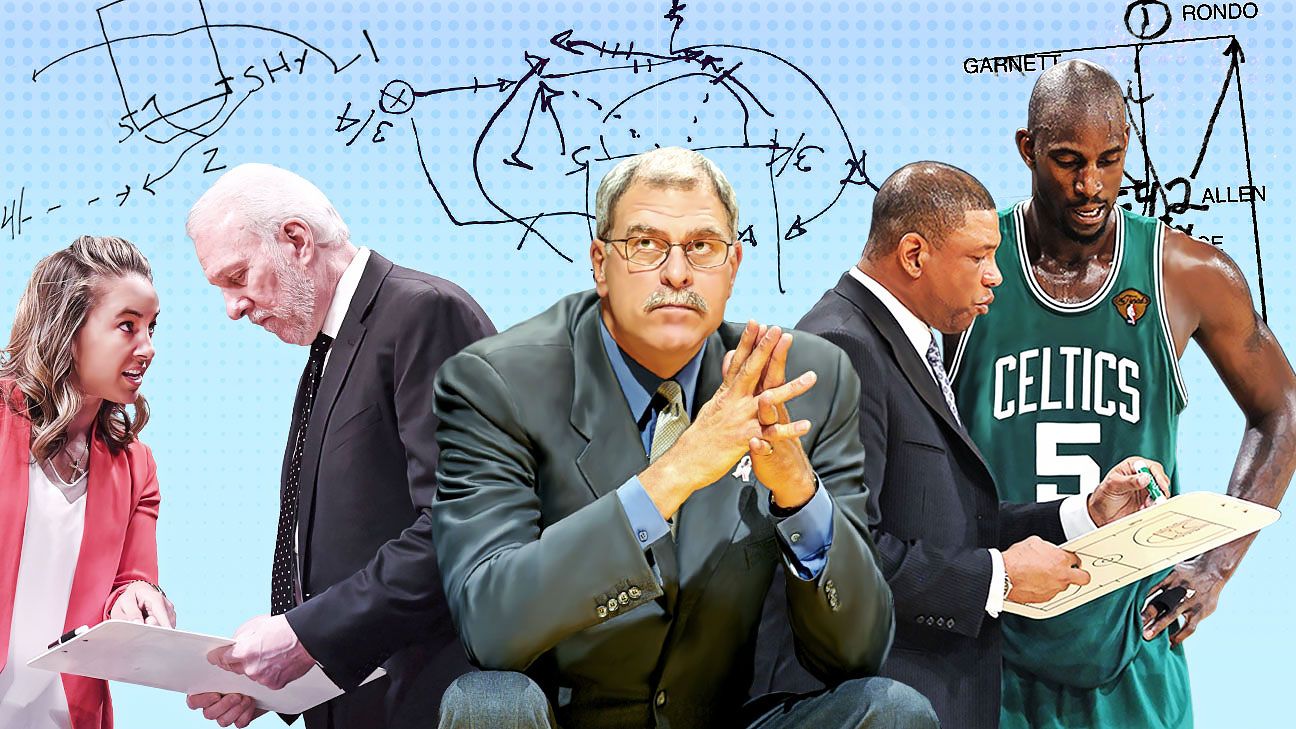
THERE'S A PLAY in today's NBA that can produce everything from a cut to the basket to a high-value 3-point shot. It's a side out-of-bounds box set that features interchangeable positions and multiple options. And whenever the Golden State Warriors run it, they have to pantomime.
"I didn't want my guys yelling out, 'WHAT THE F---!' with families and little kids sitting there," says Steve Kerr, head coach of the Warriors. "So I told them, 'Hold your arms up like you're shrugging.' It was a little less conspicuous that way."
It's called the "What the f---" play.
The origins of WTF date all the way back to 1969. It has passed through some of the greatest eras of NBA franchises -- the Warriors, the Los Angeles Lakers, the Chicago Bulls, the New York Knicks. Hall of Fame coach Phil Jackson recounts when his former Knicks coach, Red Holzman, drew up the play earlier in the season. Then later in the year, in the final seconds of a tight game, he called a time out to set it up again. Holzman lost his train of thought. He looked around and mused in the huddle as an attentive Jackson leaned in, "Now what the f--- was that play again?"
When Jackson began his NBA coaching career, he worked WTF into the mix with the Bulls, with whom Michael Jordan was the beneficiary on numerous occasions. But Jackson points out via text, "We ran a segment of it for a last-second shot that finished [the Utah Jazz in the Finals] in '97. Steve Kerr was the recipient of MJ's pass."
When Jackson went to Los Angeles in 1999, WTF went with him. The play won over an initially skeptical Kobe Bryant as the Lakers collected three championships over the next five seasons. And when the two had an acrimonious falling out after the coach left in 2004 -- Jackson wrote in his book "The Last Season" that Bryant was "uncoachable" -- it was WTF that signaled tensions were easing.
Lakers owner Jeanie Buss recalls sitting courtside one night late in the 2004-05 season. Rudy Tomjanovich was the Lakers coach at the time, and Bryant grabbed the ball out of bounds. He studied the court for a moment, then spontaneously blurted out, "What the f---!"
"When I saw Kobe call the play," Buss says, "I knew it was OK to bring Phil back."
Jackson stole it from Holzman, and Kerr stole it from Jackson. Brian Shaw, who played for and was an assistant coach with the Lakers, passed it on to Frank Vogel when Shaw was on his Indiana Pacers coaching staff. Luke Walton, an ex-Lakers player and coach and ex-Warriors assistant under Kerr, copied it for use with his current Sacramento Kings roster.
"Almost everybody runs a version of it," Kerr says.
In that regard, WTF is anything but unique. Any play, from anywhere, whether it be AAU tournaments, women's college games or international competitions is fodder for NBA coaches. Once it is captured on film, there's little doubt it will be pilfered.
"We're all thieves," Denver Nuggets coach Michael Malone says.
"I prefer," Gregg Popovich says, "to refer to us as copycats."
THIS IS NO longer Red Holzman's NBA. The game is faster, the players are bigger, the 3-point shot has become the most dominant strategic factor in the sport and defenses are more sophisticated than ever. Mike D'Antoni created an offense that is predicated so strongly on treys and isos that he says he rarely calls plays anymore. And, yet, his peers say there's still room for WTF and other recognizable staples of the coaching vernacular.
ESPN spoke with the three winningest coaches from the past four decades (minimum 1,000 games coached, by winning percentage) -- Jackson, former Lakers and Miami Heat coach Pat Riley and Popovich of the San Antonio Spurs -- and asked them to draw up one of their favorite plays. Jackson tapped WTF. Riley chose "5 Chest" from his vaunted 5 series. Popovich took a page from D'Antoni's Phoenix Suns playbook (see Pop's hand-drawn play), one that would get the team a good 3-point look at the end of the game.
Popovich liked the play because it included an element of surprise: "When the point guard goes off," he explains, "you hope his defender will come up a little bit and think, 'Oh, maybe I need to switch on this.' In other words, you're hoping he'll make a mistake." It offers a little bit of subterfuge -- at one point, the big goes over to set a screen, and, in Pop's words, "stands there like a big dummy for a while" -- and ultimately a clean, open look if all goes well.
NBA coaches have proved to be infinitely creative in unearthing new inspirations for their plays. Consider the Toronto Raptors' Nick Nurse, who, while watching the Canadian Football League's Toronto Argonauts practice one day, realized that in the CFL, players could move before the snap. He seized on that concept and implemented a side out series in which his guys move before the ball is thrown in bounds. He even checked with the league office to make sure it was legal.
Former Philadelphia 76ers coach Brett Brown was at the FIBA World Championships in 1998 when he stole an idea from the Japanese women's team, an underwhelming squad that finished a distant ninth in the competition. "It was a clever backdoor play," he says. "They were terrible, but they ran a great action."
Milwaukee Bucks coach Mike Budenholzer drew inspiration from a play that consistently thwarted his beloved childhood team, the University of Arizona. In 2004, noted X's and O's Illinois coach Bruce Weber ran a play featuring Deron Williams that began with an Iverson cut (named after 76ers star Allen Iverson, who frequently went across the staggered free throw line), continued with the wing driving to the basket and sucking the defense with him, before he would kick it back out to the shooter. "They killed my Wildcats with that thing," Budenholzer says, sighing.
Budenholzer, a Spurs assistant at the time, was so enamored that he drew it up and put it on Popovich's desk. "We [assistants] would do that from time to time," Budenholzer says. "Sometimes Pop would try it, and sometimes it went in the trash."
It was a Budenholzer action from his head-coaching stint with the Atlanta Hawks that caught the eye of Monty Williams, who isolated it on film and promptly named it "Jam."
"It's more of a concept than a play," Williams explains. "It gives the ability of a player to run and stop, which, in turn, leaves the defender looking where there's no help. You use that misdirection to go around him.
"When I was an assistant in Philly, I tried to incorporate it, but it looked so goofy they wouldn't sign off on it."
Williams ran it during the 2014-15 season as head coach of the New Orleans Pelicans featuring Anthony Davis and Omer Asik. This past Dec. 16, in a game against the Portland Trail Blazers, Williams, who now coaches the Suns, drew it up for Kelly Oubre Jr. And Oubre drilled a 3 -- and was fouled. "You'd be blown away by how open he was," Williams says.
Kerr says the influx of new coaches, especially from the college ranks, has provided some welcome new material to the league, citing both Boston Celtics coach Brad Stevens and former Michigan coach John Beilein, whose tenure with the Cleveland Cavaliers was short-lived. Kerr says he also pinched material from Fred Hoiberg, who spent 3½ years with the Bulls from 2015 to 2018 after jumping to the NBA from Iowa State.
"I see Fred at summer league and I tell him, 'We run this play called "Cyclone." We stole it from you,'" Kerr says. "And Fred says, 'I know. I came to work one morning and one of my assistants said, 'The Warriors just ran our play.'
"I asked him, 'Where did you get it?' And Hoiberg told me, 'I took it from BYU. We call it "Cougar."' A couple of months later, I'm watching some Celtics film, and there it is -- Cyclone. Or Cougar. Or whatever Boston calls it."
BYU, in fact, had stolen it from coach Stew Morrill of Utah State, where they called it "Dribble."
MORE: How elite NBA players handle pressure
WHEN RILEY WAS a young coach, he traveled the country attending clinics run by Indiana Hoosiers coach Bobby Knight and Cal legend Pete Newell, examining the game through as many lenses as possible. Named a Lakers assistant to Paul Westhead in 1979, Riley immersed himself in the "turn out" series that a network of Philly-area coaches, including Jack McKinney, Jack Ramsay and Westhead, had orchestrated. Riley added snippets from each coach he encountered to shape his own methodology.
"The triangle offense goes back 40 to 50 years," Riley says. "I don't even know if Tex Winter created it. As your offense evolves, you take a little bit from everyone and create your own monster."
Riley's was the 5 series, an offense built with wings on either side of the floor that featured misdirections, lobs, back screens and pick-and-rolls. "We had lots of options when teams loaded up," Riley says.
While many coaches feast on spontaneity, Riley repeatedly drilled his players on fundamentals such as footwork, screen angles, timing and conditioning. "People thought I worked our players so hard to keep them in shape," Riley says. "That wasn't it. The idea was if we habitualized these skills, they'd perform them at the most crucial time of the game."
The 5 Chest was designed with Dwyane Wade and Shaquille O'Neal in mind, and, Riley says, helped the Heat win a title in 2006. (See Riley's hand-drawn play.) Yet all the optimal planning still won't account for mistakes or superior scouting or an unpredictable on-court wrinkle at a defining moment.
"You better have D-Wade or Kobe or LeBron," Riley says, "because if your sets break down, you need elite talent. And they will break down -- more than 50% of the time."
ONE DAY, EARLY in his tenure as the Celtics' coach, Doc Rivers was sitting in a Florida gym watching his son Austin's high school team. He noted a baseline play that seemed particularly effective for Winter Park. "It felt like every time they ran it, Austin would get a layup or someone would get a 3," Rivers says.
After some trepidation, Rivers introduced the play during a subsequent Boston workout. Rivers briefed his starters on its mechanisms, then witnessed Paul Pierce break free for an easy basket.
Rivers named it "High School." He put it out of his mind until deep in the Eastern Conference finals against LeBron James and the Cavs in 2008. "We were in a tight game in the fourth quarter -- I can't remember exactly which one -- and we're in the huddle," Rivers says. "All the guys are saying, 'Let's run High School.' I had no confidence in it. But the guys were persistent. [Kevin Garnett] kept saying, 'Coach, I know it will work!'"
Rajon Rondo took the ball out under the basket. Ray Allen set up as the 2 and Kendrick Perkins as the 5. Rivers stacked his remaining players, Pierce and Garnett, alongside them, but instructed them to leave two gaps in the stack. "The idea was to slip into the gap," Rivers explains. "When you do, the defense always messes up. They don't know whether to go this side or that side."
Sure enough, once Rondo slapped the ball, Allen and Perkins scattered, and Pierce waltzed right down the middle of the key, untouched for a layup.
"It was amazing," Rivers says. "Paul scored off a high school play. Simplify the game, right? Sometimes that's the best way."
Over time, as teams became more aware of High School, Rivers tweaked it by initiating a similar action at half court.
Naturally, he called it "Middle School."
SPURS COACHING ALUMS speak reverently of Popovich designating certain spots or actions on the floor and naming them after NBA greats for easily recognizable dialogue with his players. Former Jazz power forward Karl Malone was so effective in one particular area, Pop drew an imaginary line between the elbow and the corner and termed the midpoint the "Malone spot," where the Jazz legend liked to catch the ball. If he set up inside that line, the Spurs would know to front him. If he was outside the imaginary line, defenders would play behind him or double-team him.
The "Steve Nash cut" involved Nash (or any other guard who chose to try it) making a beeline for the hoop, then continuing through, past the basket, with a defender madly trying to keep pace. The defender had a choice to make: continue his pursuit of Nash or fall back on the lob to Amar'e Stoudemire that everyone knew was coming.
When the Spurs planned to "Payton" a player (an homage to Gary Payton, who loved to back in and bully smaller guards), that meant having a player flip him, jumping to his high side and sending him baseline where there was weakside help.
Popovich's euphemisms were not reserved just for Hall of Fame players. There's the "Bazemore cut," named after journeyman Kent Bazemore, who excelled at going for lobs and curl cuts during his years in Atlanta. There's also the "Varejao flip screen," named after Anderson Varejao during his time with the Cavaliers. "Say I'm LeBron, and I've got the ball on the left wing," Brown says. "Varejao is coming towards me. Everyone wants to hedge on LeBron [come off the screener to push a ball handler away from the basket]. So at the last minute, Varejao flips [changes the angle] on the screen."
The "Charlie Ward cut" was a feed into the post, a cut through and then a cut back out the same side. Michael Malone recalls teaching it to James when he was a Cavaliers assistant. "He's raising his eyebrows," Malone says, "then he asks, 'Hey man, which one is the LeBron cut?'"
There is a designated region for the four-time MVP. "The 'LeBron spot,'" Popovich says, "is on the left side of the floor. He loves to shoot a 3 from the left quadrant. It's a rule. It's his favorite place."
THE WORK OF some innovators has staying power. Former coach Rick Adelman fits that bill. His corner offense, more commonly known as "Sacramento" or "Sac" since it features skilled big men who can pass and was on display when Adelman coached Kings bigs Vlade Divac, Peja Stojakovic and Chris Webber, lives on in various reincarnations in Dallas, Miami, San Antonio, Denver, Portland, Milwaukee and Golden State, among other NBA hubs.
Malone argues Adelman deserves a spot in the Hall of Fame for his vision. He hired Adelman's son David, another keen basketball mind, on his staff three seasons ago. "If you have skilled big men, like DeMarcus Cousins or Nikola Jokic, and you want to get them the ball on the elbow, now you spread the floor with shooters, and you have movement and splits," Malone says. "That's what Rick created. It's a read-and-react offense.
"It's not an old-school play where you have to go here and this guy has to do that. The league has gotten away from that. Read-and-react is a lot harder to scout."
D'Antoni's staff in Phoenix also harkened back to Adelman's work with its "elbow series," where they would rely on the gifted acumen of Boris Diaw to create scoring opportunities for Shawn Marion.
"What it stemmed from is everyone does such a good job of scouting," D'Antoni says. "So when a coach stands up and yells 'FOUR!' the other bench starts screaming, 'Watch it here, he's going to set a backdoor screen.' Everyone knows what's coming."
Even so, each team stores volumes of plays for ATOs, or after timeouts, in their database. Stevens relied on a play early in his Celtics tenure where the inbounder would throw a high cross-court pass over the defense to the corner. It was surprisingly effective, considering the degree of difficulty and the obvious gamble of such a risky pass.
In the final moments of the Warriors' Game 6 of the 2019 Finals against the Raptors, Kerr decided to try it. Andre Iguodala tossed a dangerous, high-flying, cross-court pass to Draymond Green. It sailed over his head, but Green chased it down in the corner and flicked it to Stephen Curry, who launched an open 3 from the right side of the court. The ball bounced off the back of the rim.
"We practiced that play every few weeks and never used it," Kerr says. "We did in that case because so many of our guys were down, and Steph was double- and triple-teamed.
"I figured, 'Let's try something a little crazy.' And it almost worked. The timing wasn't quite right, but we got a decent shot."
All coaches agree there's no play that's a sure thing -- and that includes the legendary WTF. Consider in March 1993, on a rare night when Jordan was out of the Bulls' lineup. Chicago was down three with seconds to go when Jackson called for WTF. But the execution was poor, and the end result less than satisfying: an air-ball 3-point shot by 6-foot-10 power forward Scott Williams.
Following the loss, longtime Chicago Tribune scribe Sam Smith pressed Jackson on his decision to get the ball to Williams, who was an abysmal 11.1% career shooter from the 3-point line and took only 45 of them in 15 seasons.
"Would you like to know what the play was?" Jackson asked.
"Yes," Smith answered.
"It's called, 'What the f---,'" Jackson replied. "And that's exactly what happened."


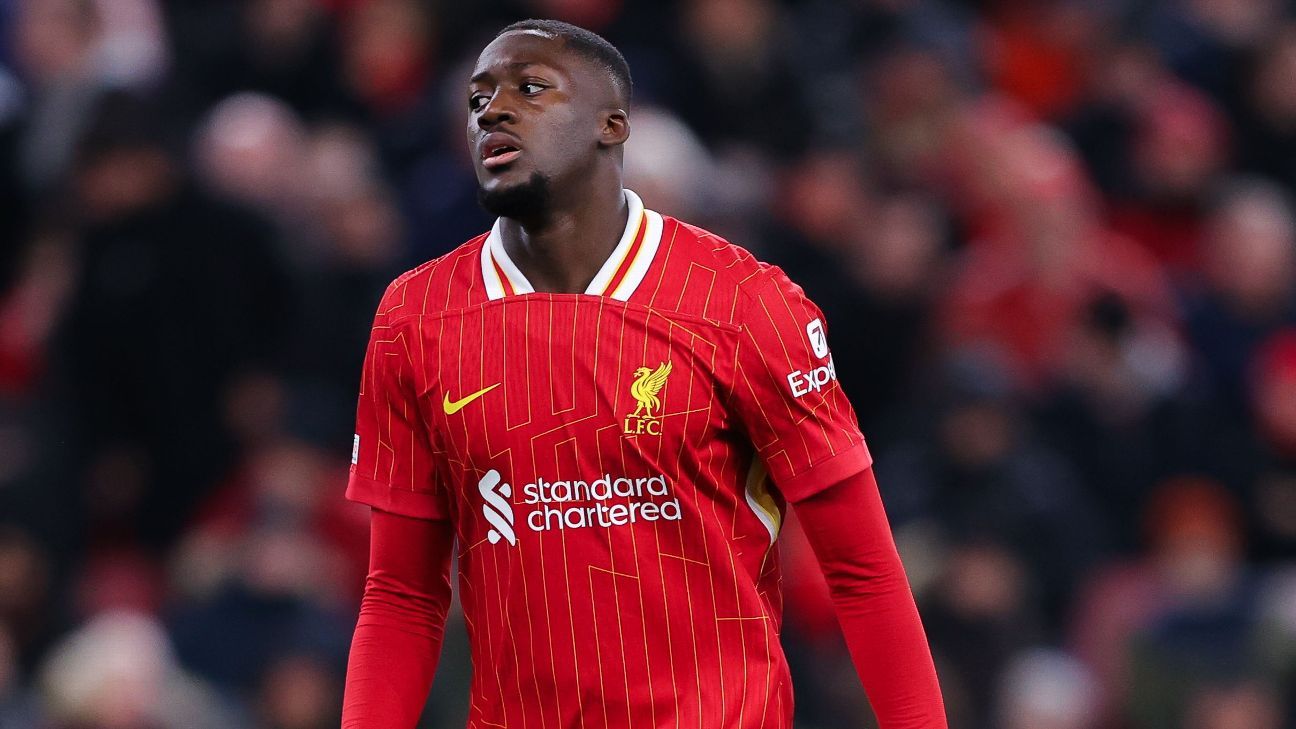

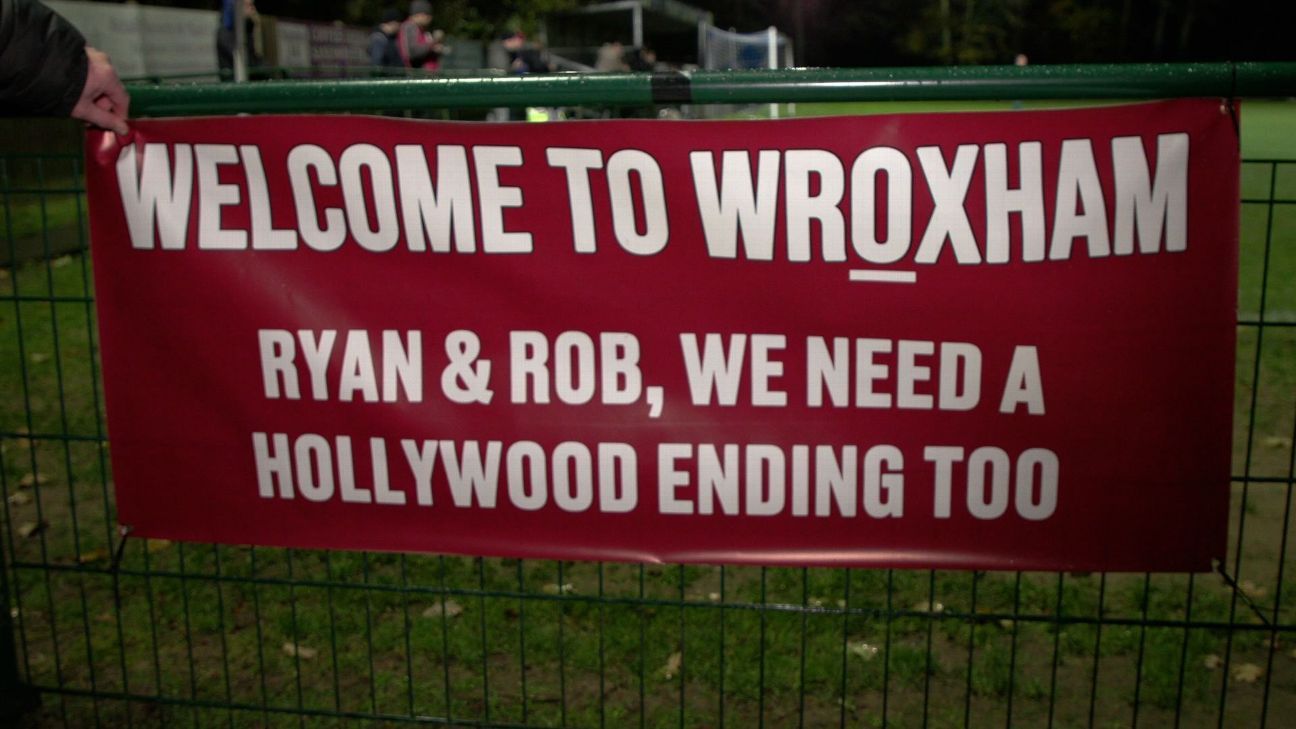






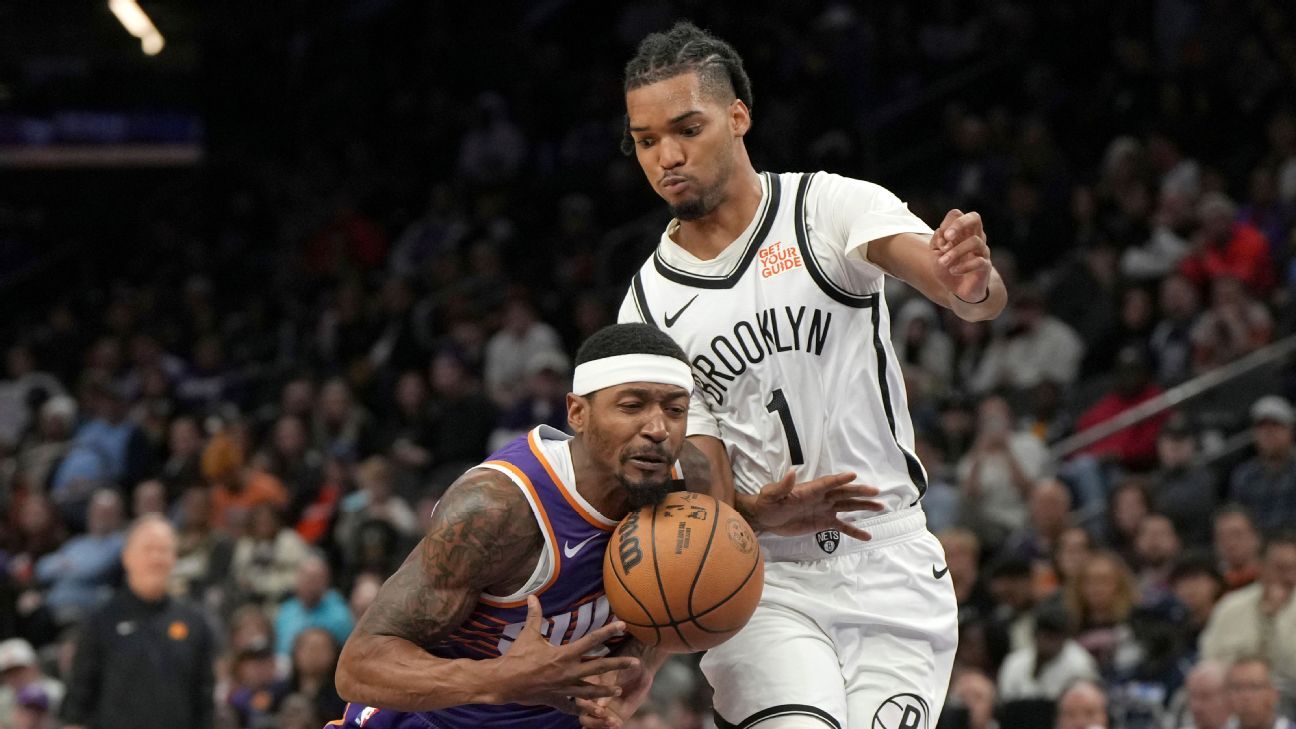
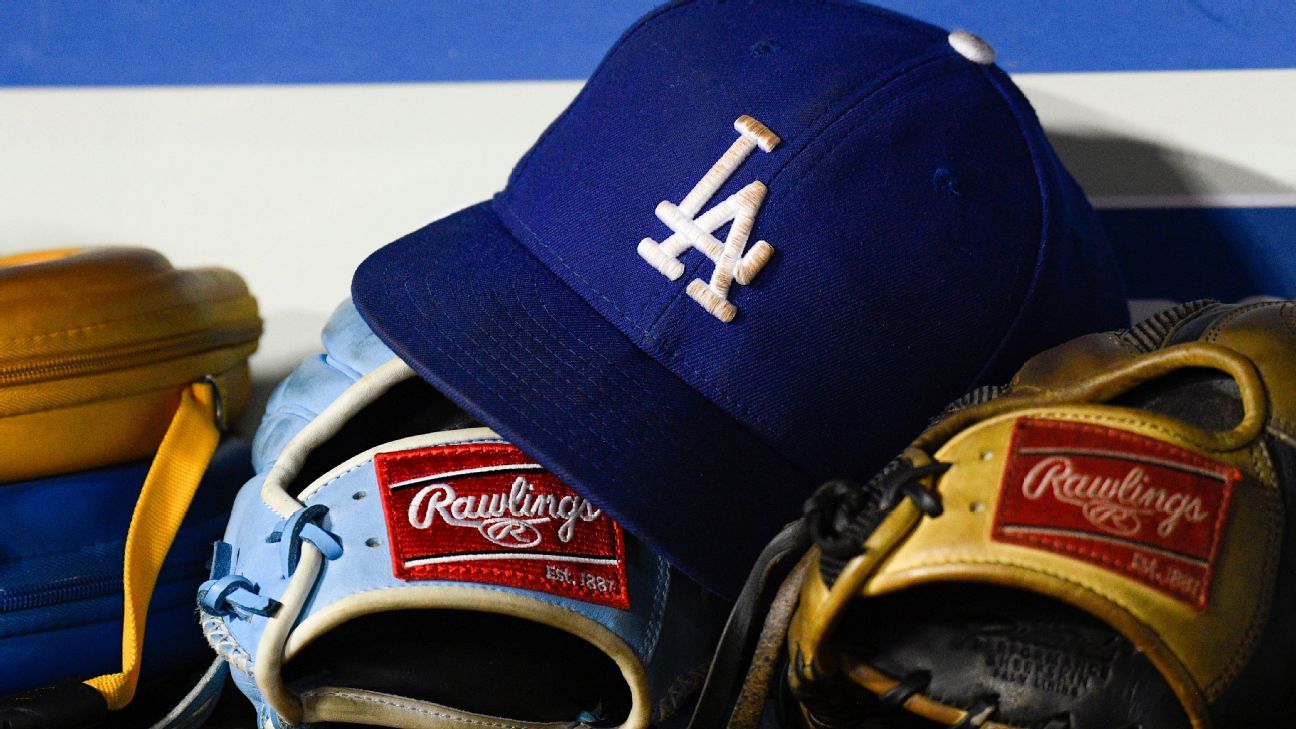


 Phone: (800) 737. 6040
Phone: (800) 737. 6040 Fax: (800) 825 5558
Fax: (800) 825 5558 Website:
Website:  Email:
Email: 






